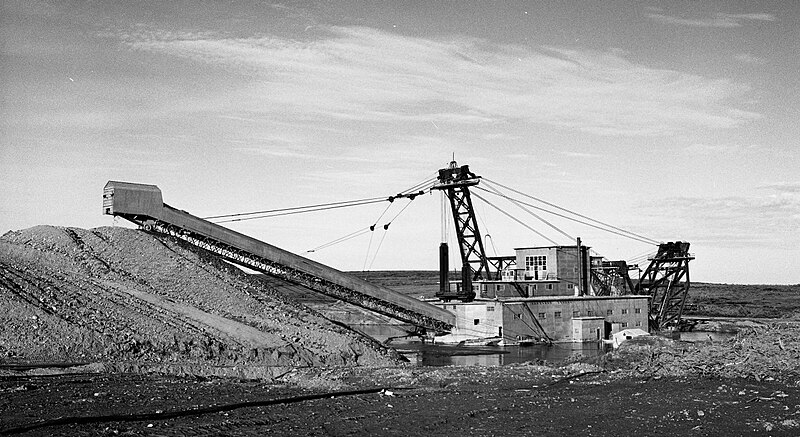Gold is found in all the rivers of the world in sizes ranging from nuggets that can weigh several pounds to tiny flakes that are the size of a grain of flour. There is a size range between nuggets and flour gold that are called “pickers” because they can be picked up between the thumb and forefinger.
Although placer gold forms as particles weathered from existing bedrock that are concentrated into viable deposits by the action of running water in rivers or beaches, or by wind. In rivers gold is commonly found in places where there is a sudden decrease in the velocity of water causing the gold to fall out of the current. Gold has a specific gravity slightly higher than 19 when it is pure. It is this high specific gravity that causes gold to be carried down through a layer of sand and gravel to come to rest on the surface of the bedrock under the river. It is because of this fact that gold is rarely visible in a river. Gold is also found in aeolian deposits where the wind has blown away for lighter components of sand.
 |
| This is gold dredge No. 3 in Nome, Alaska the largest dredge in the world for mining placer gold. |
Another type of placer deposit is formed in areas that have not been glaciated that are called saprolites. These deposits can be several hundred feet deep, and are composed of bedrock that has been subjected to a warm moist climate that has changed the rock into a mixture of clay and quartz leaving behind gold and a host of other insoluble minerals. In this case the gold is scattered throughout the entire depth of the deposit.
In all placer deposits gold is mostly found in the sand portion of the deposit gold nuggets are found in the gravel portion. Before the invention of metal detectors a great deal of gold was lost in the tailings pile because the miners classified the material they were working into sand. The gold nuggets were often discarded with the mine tailings, but are now being recovered by modern miners equipped with metal detectors.
 |
| Placer gold in a gold pan. By alaskagold |
Although it is usually possible to recognize gold in placer deposits by its color. There are times when there is a thin film of metal oxide; usually iron or manganese that forms on its surface. Gold then takes on the appearance of the other black sands in the gold pan making it virtually impossible to recognize. This problem can be solved by treating the concentrate with vinegar or muriatic acid that dissolves the covering of metal oxides.
 |
| An old time prospector panning for gold. By Tony Oliver |
There is another type of gold that we are all familiar with these are the tiny specks that show up when we are finishing a pan of gold. These specks are so small that they float on the surface of water by surface tension and are called "floaters" by prospectors. We normally lose them over the edge of the gold pan. This can be prevented by a single drop of dishwashing detergent added to the pan that causes these tiny specks to sink to the bottom where they can be recovered in the course of a regular cleanup.

Bullion Exchanges is a well known Precious Metals Seller established in New York City's Diamond District.
ReplyDeleteBullion Exchanges have a massive inventory of products including but not limited to, precious metals that range from the popular gold and silver to the newly emerging platinum and palladium.
Bullion Exchanges are offering a wide range of products appealing to first time buyers and established collectors.
nice post
ReplyDeletegold nuggets exporter congo